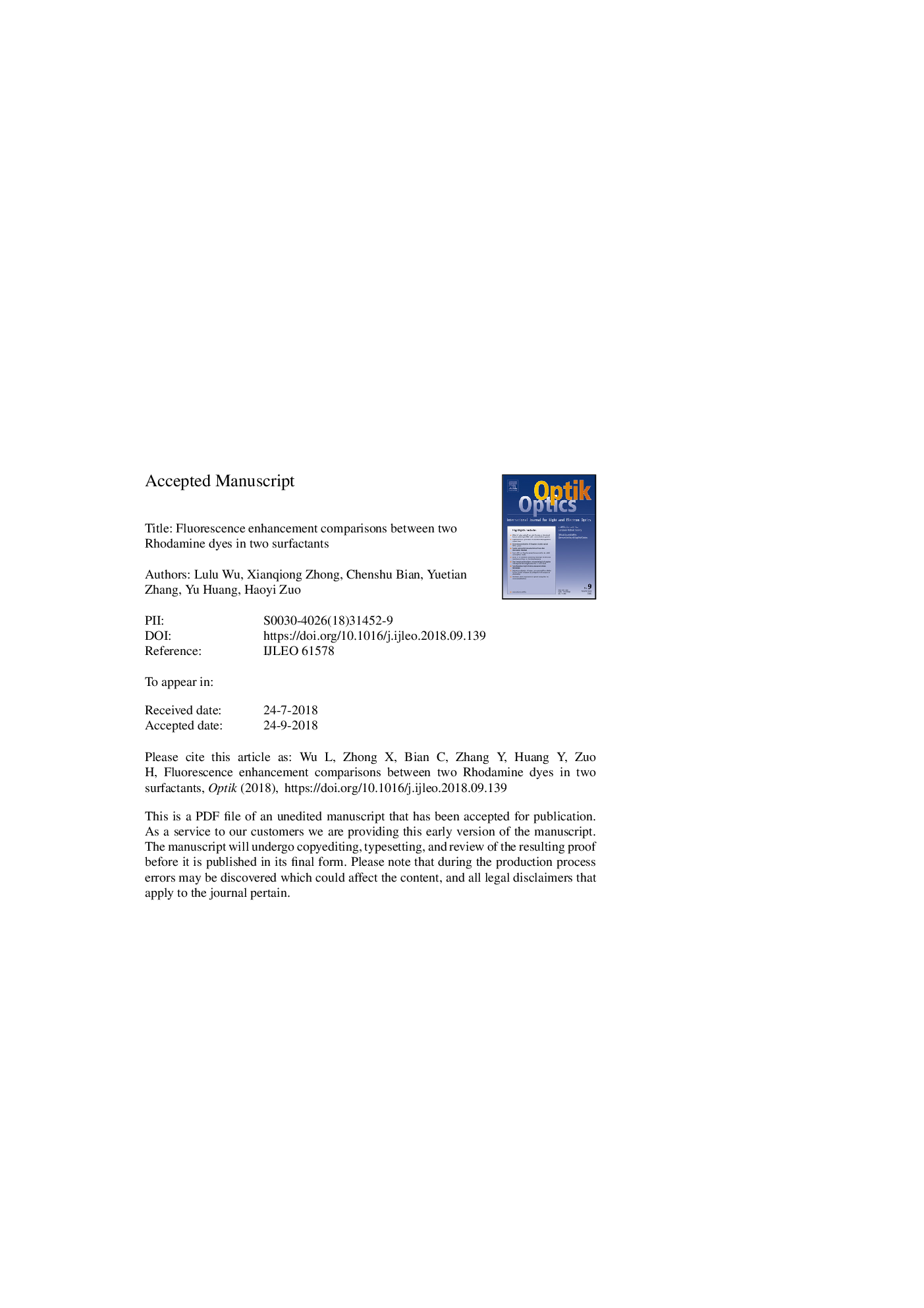| Article ID | Journal | Published Year | Pages | File Type |
|---|---|---|---|---|
| 11023516 | Optik - International Journal for Light and Electron Optics | 2019 | 15 Pages |
Abstract
Based on the laser induced fluorescence technology, the Fluorescence characteristics of two dyes Rhodamine 6G (R6G) and Rhodamine B (RB) in two anionic surfactants (AS) sodium dodecylsulpfate (SLS) and sodium 1-dodecanesulfonate (SDS) are experimentally investigated and compared in detail for different concentrations of dyes and ASs. The results show that the two ASs can weaken or enhance the fluorescence of the two dyes depending on different concentrations of dyes and ASs. In our experiment, the maximal fluorescence enhancement factors can be up to 30.1325, 15.6099, 20.0699, and 2.4403, for RB in SLS, RB in SDS, R6G in SLS, and R6G in SDS, respectively. In comparison with SDS, SLS is more efficient in fluorescence enhancement of the two dyes. Moreover, RB fluorescence can be enhanced more intensely. While SDS mostly decreases the fluorescence of R6G under our parameter conditions. The peak wavelengths of fluorescence spectra generally red-shift with increase of dye concentrations whereas red-shift first and blue-shift and then tend to fundamental stability with increase of AS concentrations.
Related Topics
Physical Sciences and Engineering
Engineering
Engineering (General)
Authors
Lulu Wu, Xianqiong Zhong, Chenshu Bian, Yuetian Zhang, Yu Huang, Haoyi Zuo,
